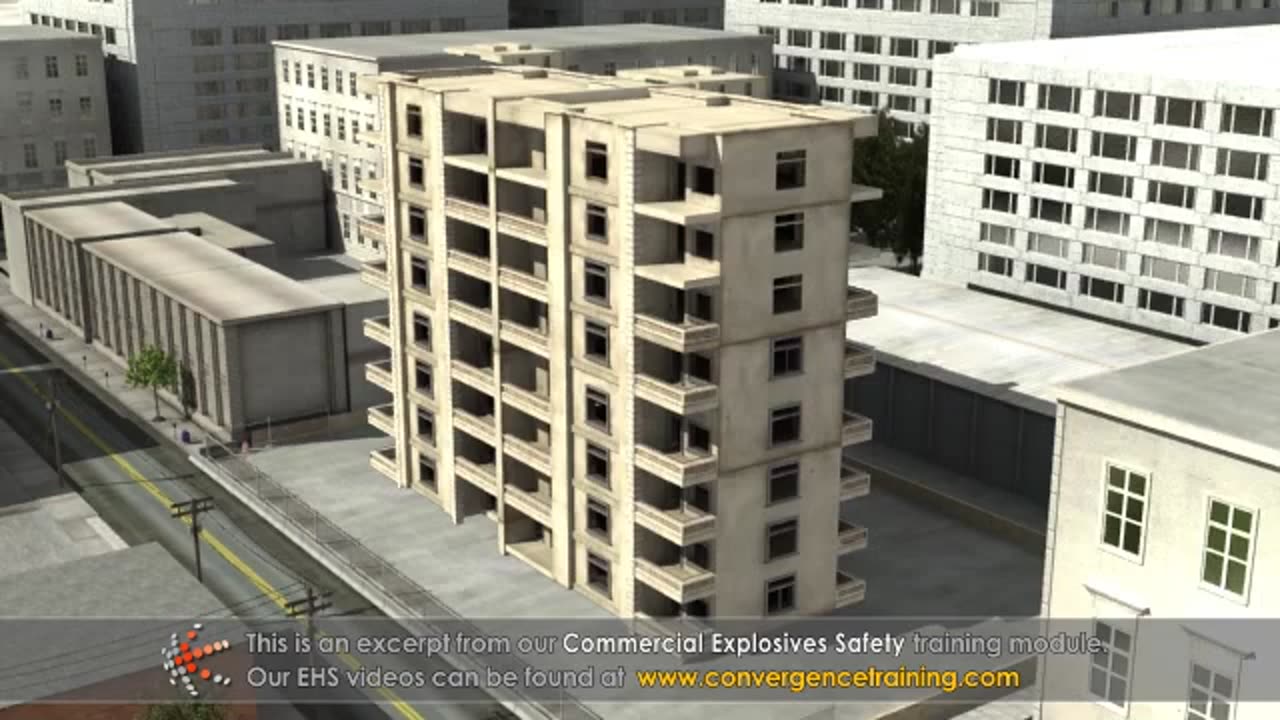Premium Only Content

Commercial Explosives Safety Training
**Commercial Explosives Safety Training** is critical for industries that use explosives, such as mining, construction, demolition, and quarrying. Proper training ensures worker safety, regulatory compliance, and the prevention of accidents caused by improper handling or use of explosives. Below is a comprehensive outline for **Commercial Explosives Safety Training**:
---
## **1. Introduction to Explosives Safety**
- **What Are Commercial Explosives?**
- Common types: dynamite, ammonium nitrate/fuel oil (ANFO), blasting caps, and detonating cords.
- Purpose: Used for controlled blasting in industries like mining, construction, and quarrying.
- **Why Safety Is Important?**
- Prevent accidents, injuries, and fatalities.
- Protect workers, equipment, and the environment.
- **Statistics and Incidents**:
- Real-life examples of accidents caused by improper handling or misuse.
---
## **2. Regulatory and Legal Requirements**
- **OSHA Standards** (29 CFR 1910.109 and 1926 Subpart U):
- Storage, transportation, and use of explosives.
- **ATF Regulations**:
- Licensing, permits, and storage requirements.
- **NFPA Guidelines**:
- Explosives safety and fire prevention.
- **Local and State Regulations**:
- Additional requirements specific to the region.
---
## **3. Types of Explosives and Hazards**
- **Explosive Categories**:
- High explosives: Dynamite, C4.
- Low explosives: Black powder.
- Blasting agents: ANFO.
- **Hazards**:
- Shockwaves, heat, and debris.
- Misfires or unintended detonation.
- Static electricity or spark ignition.
---
## **4. Explosives Storage and Handling**
- **Storage Guidelines**:
- Secure magazines in compliance with ATF regulations.
- Keep storage areas dry, ventilated, and away from ignition sources.
- Post warning signs and limit access to authorized personnel only.
- **Handling Precautions**:
- Avoid rough handling, dropping, or friction.
- Use anti-static tools and clothing.
- **Separation of Materials**:
- Store detonators separately from explosive materials.
---
## **5. Transportation Safety**
- **Vehicle Requirements**:
- Use vehicles approved for transporting explosives.
- Secure the load to prevent movement.
- **Labeling and Documentation**:
- Clearly mark vehicles with "Explosives" signs.
- Carry permits and shipping papers.
- **Driver Training**:
- Drivers must be trained in handling and emergency response.
---
## **6. Safe Use of Explosives**
- **Pre-Blast Planning**:
- Conduct site surveys and risk assessments.
- Develop a blasting plan and obtain necessary permits.
- Ensure the area is clear of unauthorized personnel.
- **Loading Procedures**:
- Follow approved loading techniques.
- Avoid overloading or underloading blast holes.
- **Initiation Systems**:
- Use only approved detonators and ensure proper connections.
- Double-check all wiring and circuits.
- **Blasting Operations**:
- Clear the blast area and establish a safety perimeter.
- Use warning signals to notify workers.
- Follow a strict firing sequence.
---
## **7. Misfire Management**
- **Recognizing Misfires**:
- Signs of a misfire (e.g., partial detonation, failure to detonate).
- **Responding to Misfires**:
- Wait a designated time before approaching the blast site.
- Notify the supervisor and follow established procedures.
- **Disposal of Misfires**:
- Handle according to regulatory guidelines and company protocols.
---
## **8. Personal Protective Equipment (PPE)**
- Recommended PPE for explosives work:
- Safety goggles and face shields.
- Anti-static gloves and boots.
- Flame-resistant clothing (if required).
---
## **9. Emergency Response Planning**
- **Incident Response**:
- Steps to take in case of accidental detonation, fire, or injury.
- Emergency evacuation procedures.
- **First Aid for Blast Injuries**:
- Treating burns, lacerations, or concussions.
- Ensure immediate access to medical care.
- **Communication**:
- Establish emergency contact protocols.
- Equip teams with two-way radios or other communication tools.
---
## **10. Training and Drills**
- **Practical Exercises**:
- Hands-on training in loading, wiring, and initiating explosives.
- Simulated emergency scenarios for evacuation and misfire handling.
- **Regular Refresher Training**:
- Update workers on new safety techniques and regulations.
- **Competency Assessments**:
- Test knowledge and skills to ensure readiness.
---
## **11. Environmental Considerations**
- **Minimizing Impact**:
- Control blast vibrations, noise, and dust.
- Prevent contamination of water sources.
- **Post-Blast Inspections**:
- Check for undetonated explosives and debris.
---
### **Key Takeaways**
- **Plan and prepare** thoroughly for all blasting activities.
- **Follow regulations** for storage, handling, and transportation.
- **Communicate clearly** and establish a culture of safety.
- **Respond promptly** and effectively to misfires and emergencies.
Would you like additional materials, such as checklists, step-by-step guides, or visual aids for this training?
-
 DVR
DVR
Geeks + Gamers
1 hour agoDisney RATIO'D on Christmas Day | Mufasa Embarrassed By Sonic 3
963 -
 LIVE
LIVE
Sm0k3m
5 hours agoPlaying games on Rumble
276 watching -
 10:37
10:37
Russell Brand
2 days agoHow is this even allowed?
101K682 -
 1:37:26
1:37:26
Real Coffee With Scott Adams
2 hours agoEpisode 2701 CWSA 12/26/24
26.9K17 -
 2:58:58
2:58:58
Wendy Bell Radio
7 hours ago9 Steps Ahead
51.3K100 -
 LIVE
LIVE
LFA TV
15 hours agoTIME FOR A NEW SPEAKER! | LIVE FROM AMERICA 12.26.24 11am EST
5,019 watching -
 1:40:22
1:40:22
Game On!
13 hours ago $3.86 earnedNFL Thursday Night Football Seahawks at Bears EXPERT Picks!
25.2K9 -
 1:50:54
1:50:54
xBuRnTx
2 hours agoWho's Ready for New Years!
16.3K1 -
 12:09
12:09
Tactical Advisor
14 hours agoSmith & Wesson Shield Plus Carry Comp
12K1 -
 4:35:25
4:35:25
Father Russell
8 hours agoDelta Force | Not A Woman? | Mad Martigan Time
54.8K3